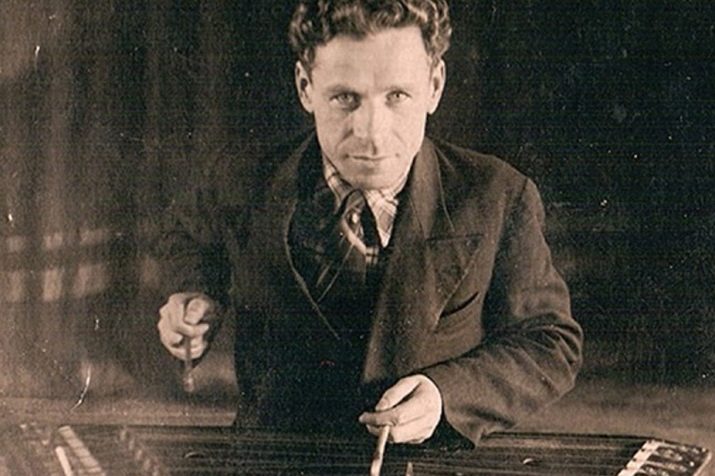What do cymbals look like and how to play the instrument?
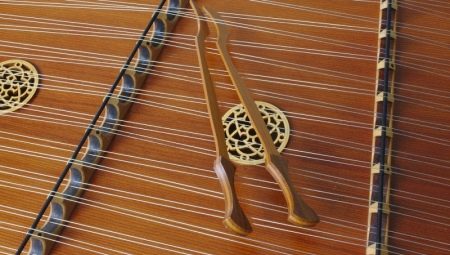
Seeing this instrument as part of a musical group, not everyone will immediately be ready to voice its name. Cymbals are really not the most common and popular type of percussion and string instruments in our country, although they belong to one of the oldest.
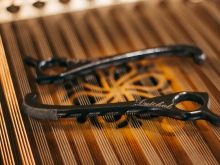
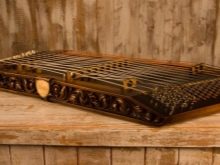
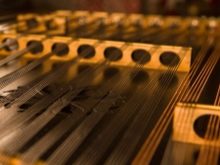
What it is?
This instrument belongs to the string percussion class, it is a subtype of chordophones. It looks like this:
- the body of the flat type is close to a trapezoid in shape, there are decks;
- most often made of wood;
- steel strings are stretched, there are several groups of strings that sound organically, in unison;
- bass strings have a copper surface, they also have several groups working in unison;
- wood hammers are required to play.
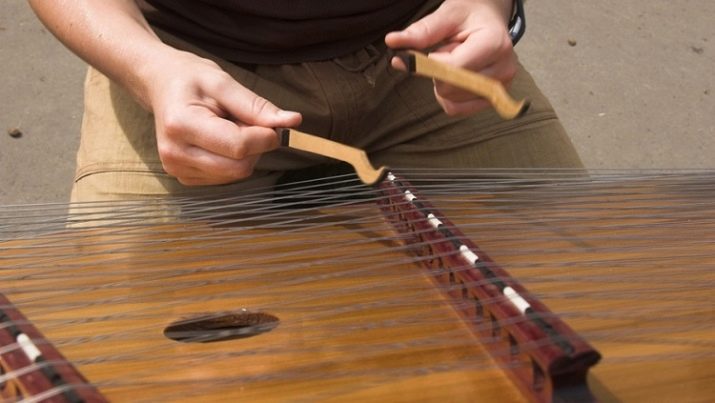
The folk instrument has a number of features:
- no muting of open strings;
- clear functionality of both hands when extracting a sound: the right one is needed for playing a melody, the left one is for accompaniment;
- hammers are not sheathed;
- during the performance, the instrument is either placed on the knees, or is placed on a special structure - a suspension;
- the bottom varies from 75 to 115 cm;
- top - from 51 to 94 cm, side - from 25 to 40 cm;
- the tools are quite compact, supplemented with a belt with which the fastening is carried out.
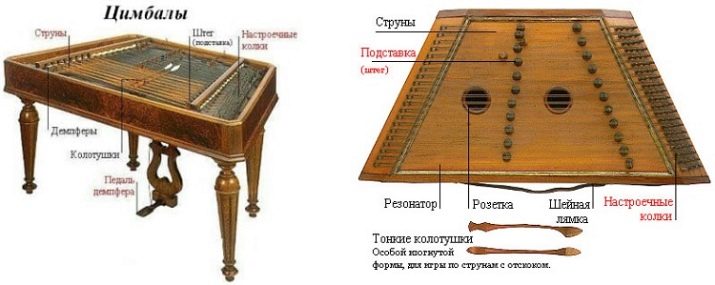
This species is most widespread in the eastern European part of the country; Hungarian cymbals are especially popular. They stand out for being part of folk art. There are cymbals in any national ensemble. The academic version has the following features and dimensions:
- traditional form;
- bottom - 1 m, top - 60 cm, side zone - 53.5 cm;
- the body deck has resonance-type holes;
- on the deck there are 6 stand-ups that subdivide the strings into intervals;
- string rows 29;
- there are 2 or 3 strings on each row;
- tuners allow you to tune the rows of strings;
- there is a damper pedal that slows down the vibrating strings and muffles the sound;
- the body of academic models itself is made of maple material, the soundboard is made of mountain-type spruce.
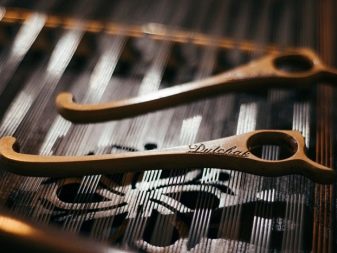
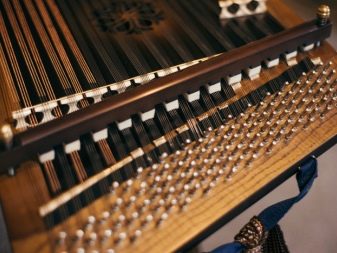
History
The Middle East is considered the birthplace of the instrument, it appeared in ancient times. Back in the 4th century BC, people played on something very similar, archaeologists found the remains of things in the ancient Sumerian zone. Images of similar tools on pottery and bas-reliefs from the 9th century provide additional evidence that cymbals had predecessors.
Gradually, the musical instrument began to conquer the world, it was present in the culture of Asian, African, European peoples. It had its own name among different peoples: dalsima, santur, kanun. But in most territories of Eastern Europe, it is called cymbals. The folk instrument gradually changed its appearance, supplemented, improved, many masters finalized it. The instrument became widespread in the XV-XVI centuries, when it gained recognition among the inhabitants of not only small villages, but also large cities. He came into vogue when teaching the nobility to perform music at home.
Thanks to its convenience and versatility, it has won its place in solo, accompaniment, as part of a group.

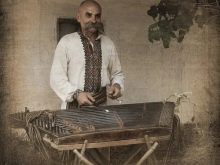

It is not surprising that soon, to this music, festivities and celebrations, wedding ceremonies, and then palace ceremonies were held. Already in the 18th century, the instrument was often used for serious compositions: operas, symphonies. It is believed that the breakthrough in the change of cymbals happened in the second half of the 19th century, when the structure was radically altered. Hungarian craftsmen were able to make the following improvements that changed the fate of the instrument:
- the number of strings has been added;
- the frame has been significantly reinforced;
- a detail has appeared that allows you to muffle the sound of the strings;
- the base was installed on the legs in the amount of 4 pieces.
It was on this basis that a modern instrument for concerts was later created. Until now, it is widely used in orchestras and ensembles in many European countries. At the beginning of the 20th century, cymbals were finally modernized in Belarus, where they acquired the status of a national cultural regalia. At the same time, cymbal instruments were created, which made up the folk orchestra of this country.
Today cymbals are popular in many countries of the world, where the instrument is used not only for professional, but also for amateur performance.
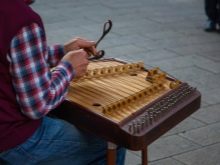
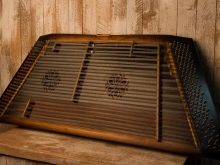
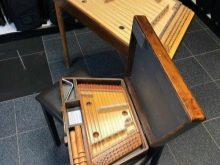
Sound
Folk and professional instruments sound differently, but they extract sound from them in one way - with the help of wood hammer sticks. In the common people they are called hooks. Performers of any kind of music hold the hooks equally, between two fingers, while the rest are clamped together. Since the sticks of the populists are not plated, the sound is produced by the contact of metal and wood.
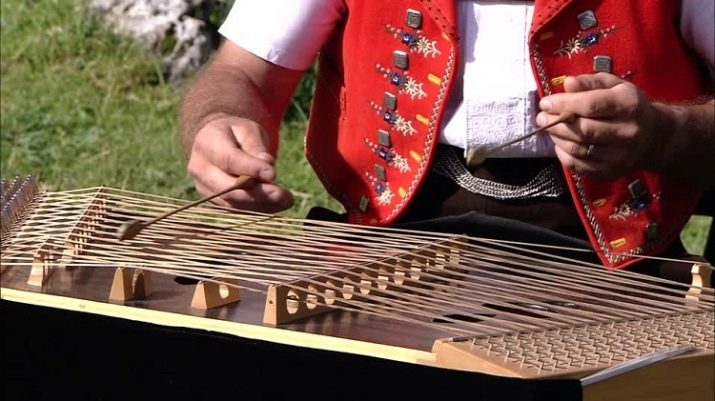
For classical concert performers, the performance is complicated, so the hooks are covered with suede fabric. Moreover, a small amount of cotton wool is used. It is the casing that is the main nuance in extracting sound from a musical instrument. For example, the rigidity of the casing provokes a harsh sound, busting with softness leads to fuzziness, blurring of a dull sound.
A quality instrument is able to demonstrate the richest sound. It can reproduce sounds similar to a grand piano or a bell. Timbre is a very pleasant instrument, while not losing the richness and richness of the sound, which has an excellent length.
In the next video you can discover the unique sound of cymbals.
Views
There are two types of instrument: folk and concert (academic). This unit is the main one.But folk options have significant differences, since each country had its own rules and manufacturing standards. Orchestral and folk models also differ from each other. Folklore variations have 2 or 3 stands, for example bass and vocal. The stands subdivide the strings into fifths, quarts, which form the sound in a three-register version.
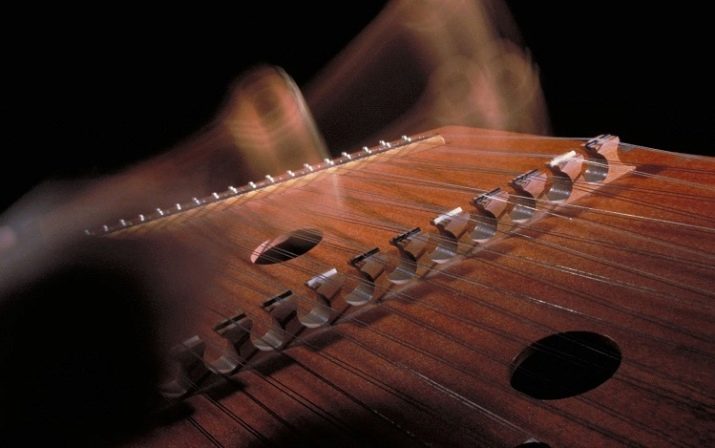
Professional instruments have 6 stands, 2 of which are main, and the rest are additional (lower and upper). They are also divided by intervals, but already into fifths, thirds, seconds. The types differ not only in the number of strings, but also in their length and section. In a folk instrument, the range of sounds is limited to two octaves or a little more. Academic has wider possibilities, a number of sounds are chromatized.

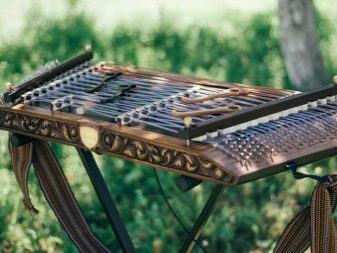
The following subspecies of cymbals are distinguished:
- Hungarian (the largest);
- santur (in demand in the countries of the East);
- Appalachian (popular on the American continent, narrow, in an oval-elliptical shape).
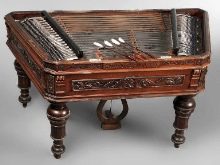
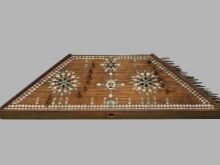
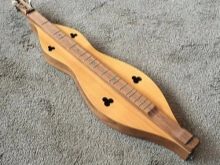
Technique of the game
Playing cymbals in the past was limited to extracting the simplest combinations of sounds and elementary melodies, but now they have huge sound possibilities. There are a variety of techniques, performance techniques.
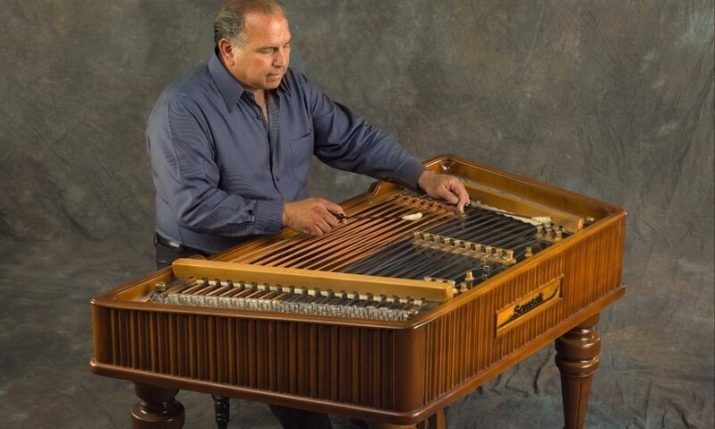
"Hit"
In the popular version, the main technique for producing sound is still a hit in an accelerated or slowed down tempo. This is the simplest technique, which is carried out by a one-time impact on the string material. From the impact, overtones are born, superimposed on each other, the sound vibrates and is formed into a melody. The impact can be weight or wrist, depending on the degree of impact. These types are closely intertwined with each other, used in aggregate, passing the dominant to each other.
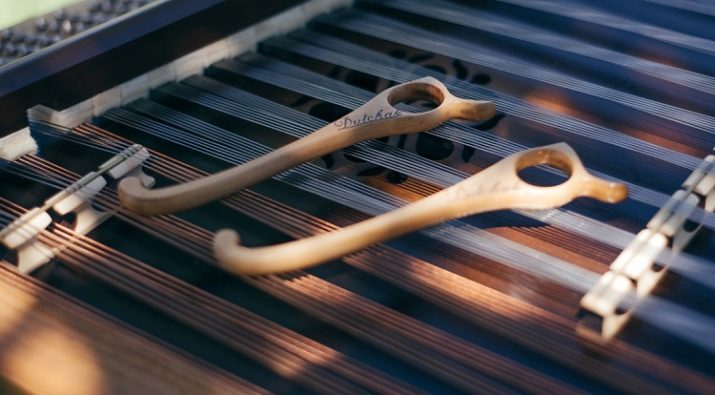
A blow can produce both a separate sound and a chord complicated by rhythm, timbre, dynamics. Most often, the beats for this performance are fast. Slow ones are used to create solemn melodies. This technique can be used for both trimmed and bare crochet hooks by simply flipping the hammer over. A blow can also produce a sound similar to castanets; for this, the hammer is directed to the edge of the deck.
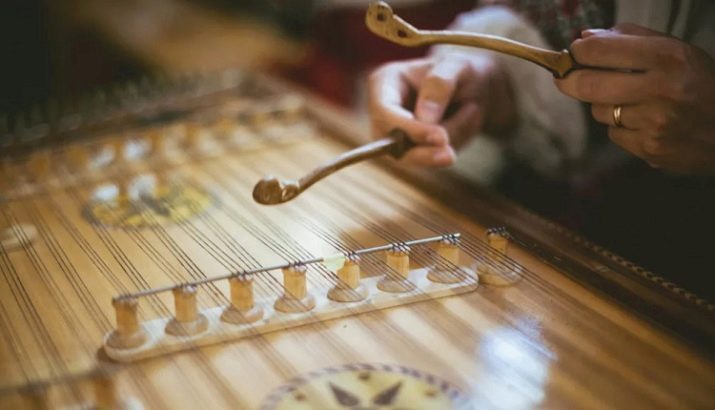
"Tremolo"
Another popular technique is to repeat the sound several times, for this you alternate hooks. Its purpose is to create uninterrupted sound. The technique made it possible to achieve a smoother sound with a jitter effect. They use it in academic practice. You can master this technique only by professionally making music. Beats during tremolation are usually of the wrist type, as fast and smooth as possible. The technique is used at different intervals, it can appear as a short or a long version.
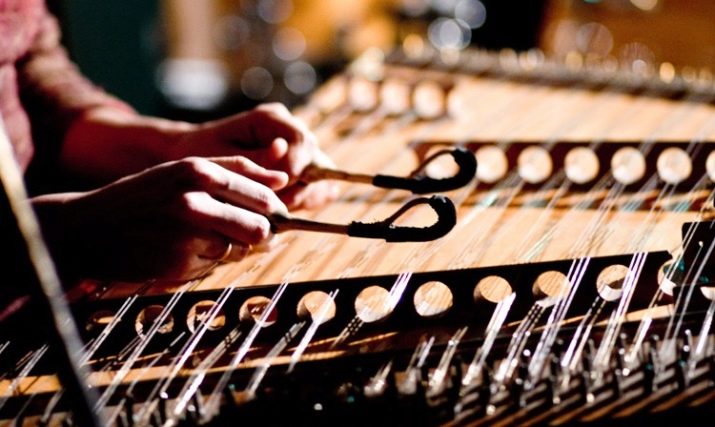
"The plucked game"
The plucked pizzicato technique is performed with two methods: fingers and nails. The second option allows you to pluck a single string and produce a sound of average volume. You can also pluck multiple strings for a deep, bright sound. Pillow reception also has subspecies: elastic is needed for a dense sound, soft - for a gentle one. This technique is very expressive and used extensively. Several sounds can be demonstrated with two hands.
State-of-the-art craftsmen are capable of producing trills and plucked tremolo.
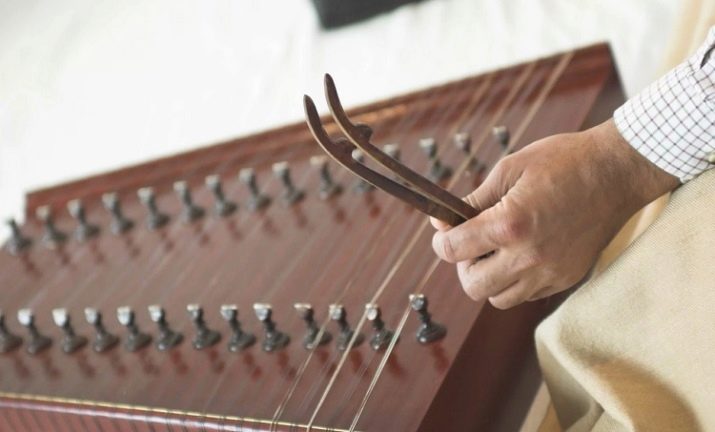
"Flazolet"
A relatively new technique for cymbals, which consists in extracting a sound with the lightest touch of the finger to the string and at the same time striking with the other hand. It is possible to extract different variations of sounds, the brightest - octave and two-octave. This technique is suitable for playing at a moderate pace, since there are certain limits within this framework.
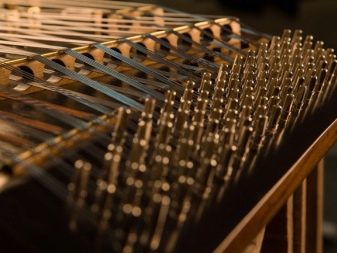
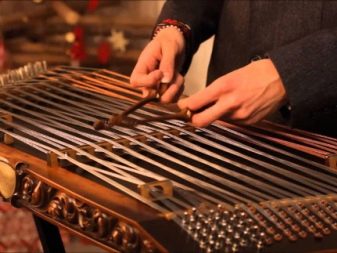
"Mute"
Produces a dry, muffled sound. The method also began to be used on this instrument not too long ago. The point of the technique is to clamp the string with one of the fingers and strike the hook with the other hand. The finger can be moved not too much, but this makes it possible to extract a wide variety of variations of sounds: softer, brighter, softer.
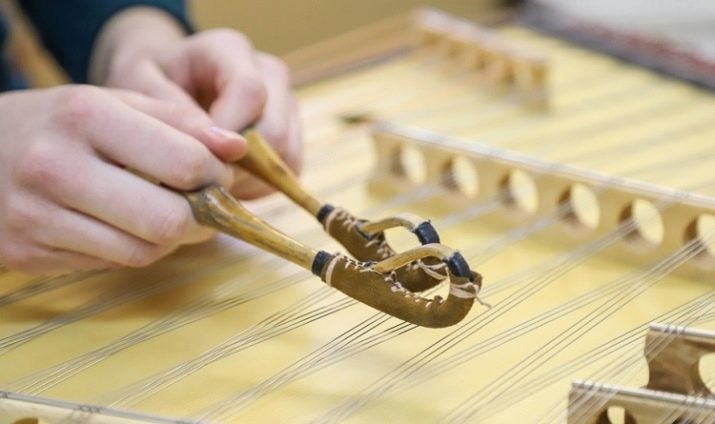
"Arpeggio"
It is often used in folklore performances. At the same time, sounds are produced in sequence up or down. Sometimes this is almost the entire range of chords. The higher the skill of the cymbalist, the more often he can change chords, muffle them without overlays.
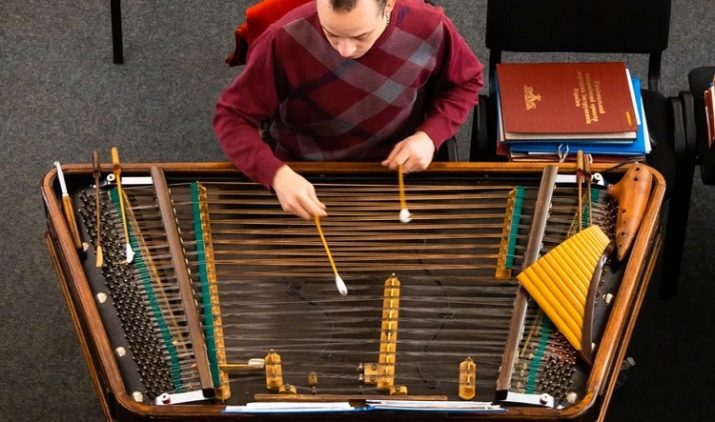
"Glissando"
One of the most expressive techniques, which is characterized as sliding in the transitions between sounds. Gliding can be done with nails, fingers, hooks in chromo order. Glissando is applied up and down, the skill lies in the ability to play a long, two and a half octaves sound by sliding from hand to hand. Sound production of this type is suitable for linking between phrases or as a means of presentation. In rapid form, this technique can also be performed (up to two octaves).
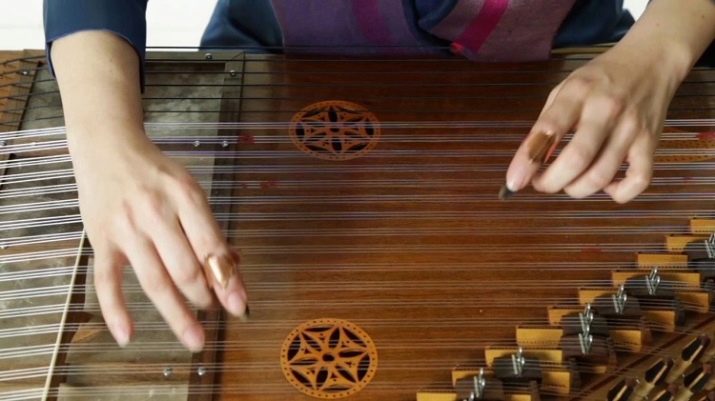
"Vibrato"
The string is first lowered, then the hand presses on it to create vibration. This technique can be frequent or not, in any case it sounds very bright in timbre. Specialists are able to use two techniques at once at the same time, apply different types of blows, combine techniques. It is quite difficult to master the combination of textured variations with different hands. This requires excellent coordination, listening skills, and combining all this with other functionality. The above techniques are used to perform compositions in different genres and styles.
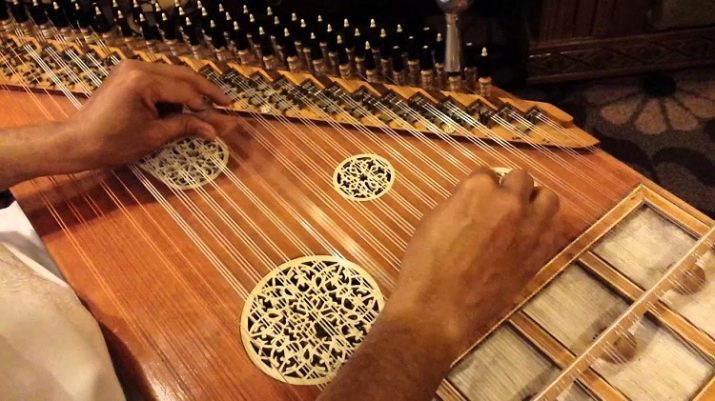
Famous cymbalists
Due to its original sound, this instrument has often become the object of close attention of composers. Music written by famous authors required the participation of cymbals. Among the names popular in their environment, the following composers can be distinguished, who more often than others include cymbals in their compositions:
- Franz Lehár;
- Igor Stravinsky;
- Franz Liszt;
- Claude Debussy.
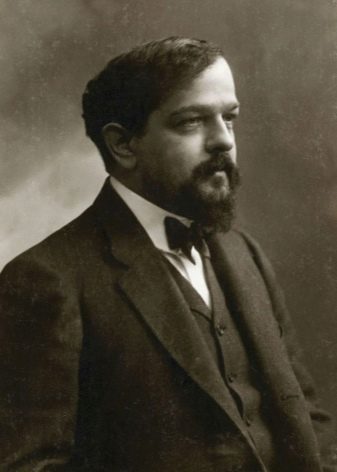
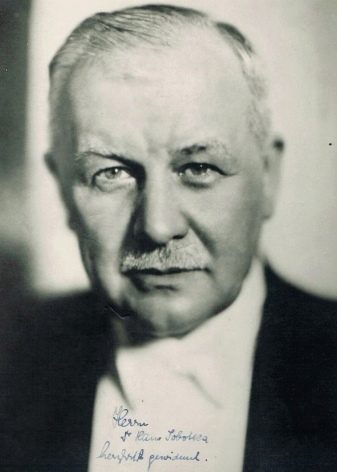
They wrote a variety of music, differing in styles, eras, trends, genres. There are not only original works written especially for cymbals, but also adapted classics: Beethoven, Mozart, Vivaldi, Bach and others. It is not surprising that the library of sheet music for this instrument is gorgeous, and, accordingly, there are many musicians who have become famous in this field. The performing history of this instrument is equally impressive.
- Aladar Rat. Hungarian musician recognized as one of the best performers of the last century. It was he who inspired many composers to create works for an atypical instrument. He has received a number of prestigious music awards. Thanks to Ratz, the popularization of the instrument in the first half of the 20th century was very active.
- Erkel Franz. A composer from Austria-Hungary, among his achievements, a special place is occupied by the demonstration of cymbals in the orchestra of the opera house. Thanks to him, the instrument was used in a number of the best works of the operatic genre.
- Joseph Zhdanovich. A Soviet musician whose achievements in the field of music are impressive. In addition to various titles for performing, he has achieved success in other areas. He is the author of a specialized textbook on music, teaching aids.
